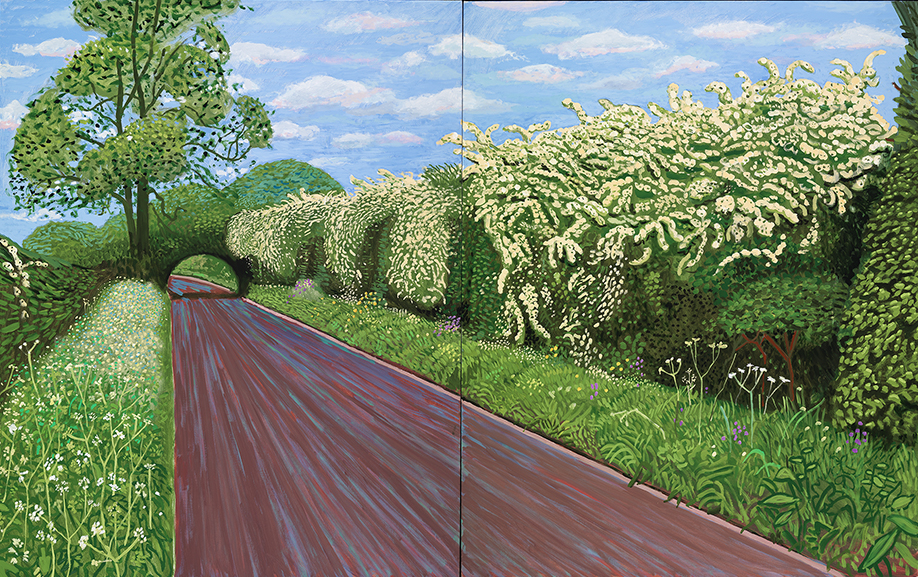The painting has been worked in a very bold and crude style, a trademark of Hockney’s works.
David Hockney is a British painter, who also dabbles in stage designing and photography. He is currently one of the most influential artists from Britain. Originally from Kensington, Hockney spends a lot of his time in the US, where he has a couple of residences.
Many of Hockney’s paintings depict countryside scenes in bold colours, but he is also known for his portraits, through which he started his art career. His self-portraits are also interesting.
Hawthorne Blossom Near Rudston is a part of the Hawthorn Blossoms series of paintings, which also includes Hawthorn Blossom, Woldgate, The Big Hawthorn, and May Blossom on the Roman Road.
An outstanding feature of all these paintings is the depiction of the blossoms, which are large, slightly yellowish, and stand out boldly, a very challenging depiction of these flowers, which actually look delicate, white, and very different from their depiction. Hawthorne Blossom Near Rudston is no different from the other hawthorn blossom painting in this regard.
The painting shows a straight road across the canvas with greenery on both sides. To the left are small shrubs and a couple of trees in the distance, while the right has a row of hawthorn blossoms in full bloom. Far in the distance, there is an archway made from carefully grown and pruned greenery. With the use of bold colours and proper lighting, Hockney has managed to convey a sense of the traditional scenic landscapes with an added touch of liveliness.
Hawthorne Blossom Near Rudston has been displayed in a couple of exhibitions, notably at the successful “The Bigger Picture” at the Royal Academy of Arts. A typical work of the artist, Hawthorne Blossom Near Rudston gives a sense of a lush and green countryside and is ultimately a ‘happy’ painting.


